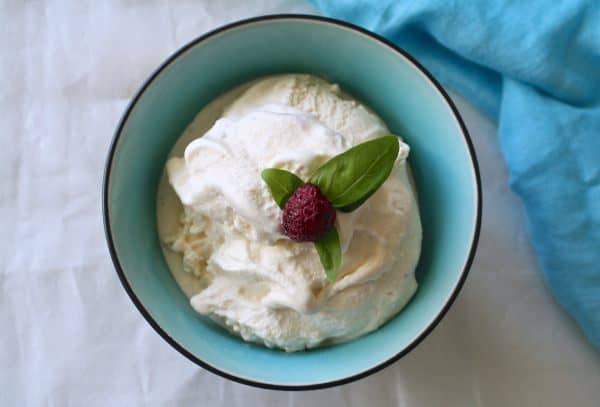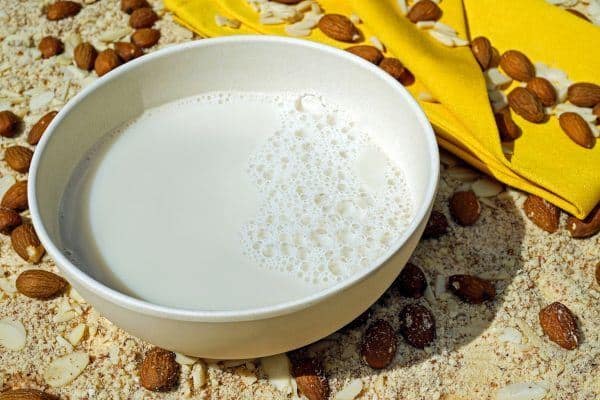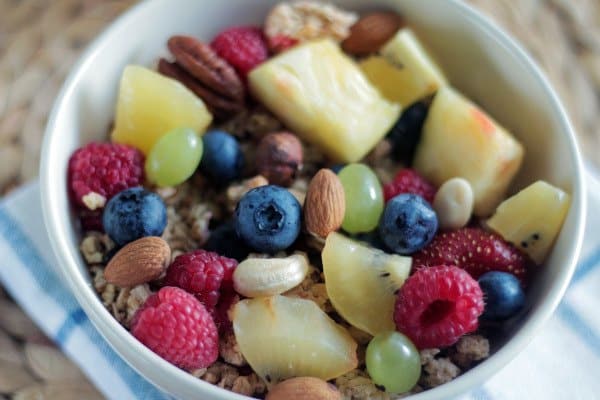Frozen yogurt, popularly called “froyo” is a fermented dessert that has a tart taste and creamy texture. So, what is frozen yogurt? Frozen yogurt is made by adding bacterial cultures to milk and is very similar to ice cream. However, the key difference is that frozen yogurt is made with milk, not cream and is essentially a combination of yogurt, sugar, and flavorings.

Frozen yogurt is available in stores, where you can buy it in cones or cups or you can make your own froyo at home and you can add a whole lot of toppings to your froyo like fruits, maple syrup, sprinkles, and chocolate chips.
Table of Contents
History of Frozen Yogurt
The history of frozen desserts goes way back to Roman and Chinese empires and there is a popular tale of Nero, the Roman emperor, who sent his slaves to the mountains to bring snow to mix with fruit pulp, honey, and nectar. Compared to other frozen desserts, frozen yogurt is fairly new. Frozen yogurt was invented in 1970 in Massachusetts when a dairy employee of Hood put yogurt into a soft-serve ice cream machine. In 1971, the first “frogurt cone” was sold by a store at Harvard Square.
This Can’t Be Yogurt (TCBY), later known as The Country’s Best Yogurt produced the first commercial frozen yogurt in 1981 and by the mid-80s it became the biggest frozen yogurt franchise. In the 1980s frozen yogurt took the world by storm and became extremely popular. Froyo was available in a variety of flavors and was served in cups and cones, on waffles, crepes, banana splits, with toppings, etc.
In the 1980s, the froyo market reached around 25 million in terms of sales and the market saw triple-digit growth. Recognizing the potential of this frozen dessert, several ice cream brands started producing frozen yogurt.
However, by the 1990s the popularity of frozen yogurt waned and fizzled out. But its popularity rebounded with the launch of self-serve stores that let customers mix and match flavors, pick their own toppings, choose their portion size and pay according to the weight.
Now that you know what is frozen yogurt and a bit about its history, let’s look at what goes into the frozen yogurt and how it is made.
Ingredients
Frozen yogurt is made in a similar way as ice cream and has similar ingredients. The main difference between ice cream and frozen yogurt is that frozen yogurt contains the bacteria strains, Streptococcus thermophilus and Lactobacillus bulgaricus, which comprises around 1% of the ingredients and gives frozen yogurt its distinct tart flavor.

The main ingredients in the frozen yogurt are milk and milk products. Usually, the milk fats comprise around 0.5% to 6% of the ingredients. The milk fat makes the frozen yogurt rich and creamy. The MSNF or (milk solids, not fat) comprise around 8% to 14% of the froyo. The milk solids consist of 55% of lactose or sugar, 37% protein and 8% minerals. The protein helps to increase the viscosity and smoothness of the froyo and prevents it from melting.
The two other most important ingredients in frozen yogurt are air and water. Air is introduced into the mixture and this helps to add volume along with water that exists in the mixture. Sugar comprises around 15% to 17% of the ingredients in frozen yogurt and usually, cane sugar or beet sugar is used. The sugar not only makes the frozen dessert sweet but also helps in improving the viscosity and body of the froyo.
The frozen yogurt also contains stabilizers such as vegetable or animal gelatin to preserve the smooth consistency of the yogurt. These stabilizers help to prevent melting, reduce crystallization and also improves the handling properties of the froyo.
Emulsifiers are added to the mixture to help blend the mixture and also add firmness to the product. There are other ingredients such as coloring, mineral salts, egg solids and flavors are added to the frozen yogurt in small quantities.
Manufacturing Process
- 1The ingredients are measured and the dry and liquid ingredients are combined separately.
- 2The liquid ingredients are poured in a vat, mixed and heated. The mixture is heated so that the ingredients are dissolved and blended. The dry ingredients are then added and the temperature is increased gradually. The ingredients must be added before the mixture reaches a temperature of 120°F (49°C), otherwise, it will become lumpy.
- 3The mixture must then be pasteurized so that all the harmful bacteria are destroyed and this also helps to preserve the final product. The process of pasteurization involves heating the mixture to a very high temperature for a specific time and then it is cooled quickly to a temperature below 40°F (4°C).
- 4The mixture is then homogenized, which makes it smoother. Homogenizing causes the fat in the mix to be broken down to less than 2 micrometers, without which the fat will rise to the top and form a layer of cream.
- 5When the mixture is at 90°F (32°C), a 1% yogurt culture is added to it and the mixture is kept at this temperature until it sets. Once the mixture sets, it is ready for cooling.

- 6The mixture is then cooled from 90°F to 40°F when it becomes viscous. When the mix cools, it is stored inside coolers in an aging tank where it rests for around 4 hours.
- 7Flavorings, sweeteners, and coloring are mixed in a vat and added to the mixture in the freezer and while the mixture hardens, it is whisked to incorporate air to create excess volume or overrun. Incorporating air into the mixtures helps to make it smooth and makes the frozen yogurt more appetizing.
- 8The mixture starts freezing in around 3 minutes and around 50% of the overrun is achieved in a few more minutes. During this stage, around 1/3-2/3 of the water freezes.
- 9Once the desired overrun is achieved, the mixture is then packed and kept in the freezer and the process of freezing continues. The mixture should be frozen very rapidly as this will help to prevent large and coarse ice crystals. The hardening can take between 1 to 12 hours, depending on the type of freezer.
And, now that you know what frozen yogurt is, you can choose your favorite flavor to refresh you on a hot day. Depending on the manufacturer’s recipe, some brands and flavors may be healthier than others and the product may vary in terms of the tartness or sweetness, flavor, consistency and fat content. And finally, the portion size of the froyo and what toppings you add to it will determine how “healthy” your cup of frozen yogurt is.
Resources:
Healthline
Pharmaca
Taste of Home
Wikipedia
